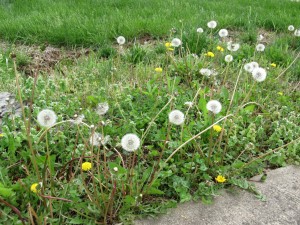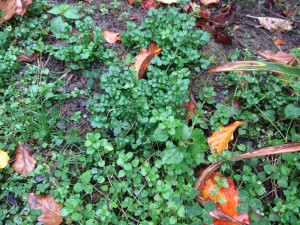By definition a weed is any plant that you don’t want in your garden. Herbicides are vegetation killers and classified as a pesticide that kills weeds. When used incorrectly, herbicides may injure good plants as well. Always read and understand the package directions before using.
In a lawn or garden, you may be trying to control (manage) three different kinds of weeds: grasses, broadleaves, and sedges. Broadleaf weeds including dandelions, spotted spurge, buckthorn, purslanes and thistles. Fall and late winter (before new leaves emerge) are safe times to spray broadleaf herbicides. Most deciduous shrubs and trees are shedding their leaves and are less susceptible to the spray drift. Some herbicides are labelled to kill sedges only or grassy weeds only such as yellow nutsedge, dallisgrass, or quackgrass.
Check the weather forecast before spraying herbicides. Avoid spraying on windy days or on hot days over 85 °F as herbicides may drift or volatilize, injuring nearby garden plants. Hot summer temperatures increase chances of lawn injury from herbicides. It should not rain for 8-12 hours following an application.
For a herbicide to work, outside temperatures need to be 60 °F and higher over a 6 hour interval for contact broadleaf herbicide spray to be adsorbed inside the plant. Regardless the time of the year, weeds need to be actively growing for herbicides to work.
Don’t mow a few days before and 2-3 days following an application. Greater leaf coverage is important here. Don’t spray newly seeded areas and wait 3-4 mowings before treating a new lawn with additional herbicides.
Spring and early summer herbicide applications do not control perennial and woody vegetation such as brambles, poison ivy, and invasive species. Wait until mid-summer to start tackling these tough weeds; multiple applications are usually necessary.
Heavy weed invasion in lawns may be evidence of poor mowing practices, low soil fertility, or too much shade which favors the weeds more than the grass. Presence of knotweed and spotted spurge usually indicates bad soil compaction.



 Posted in
Posted in 
